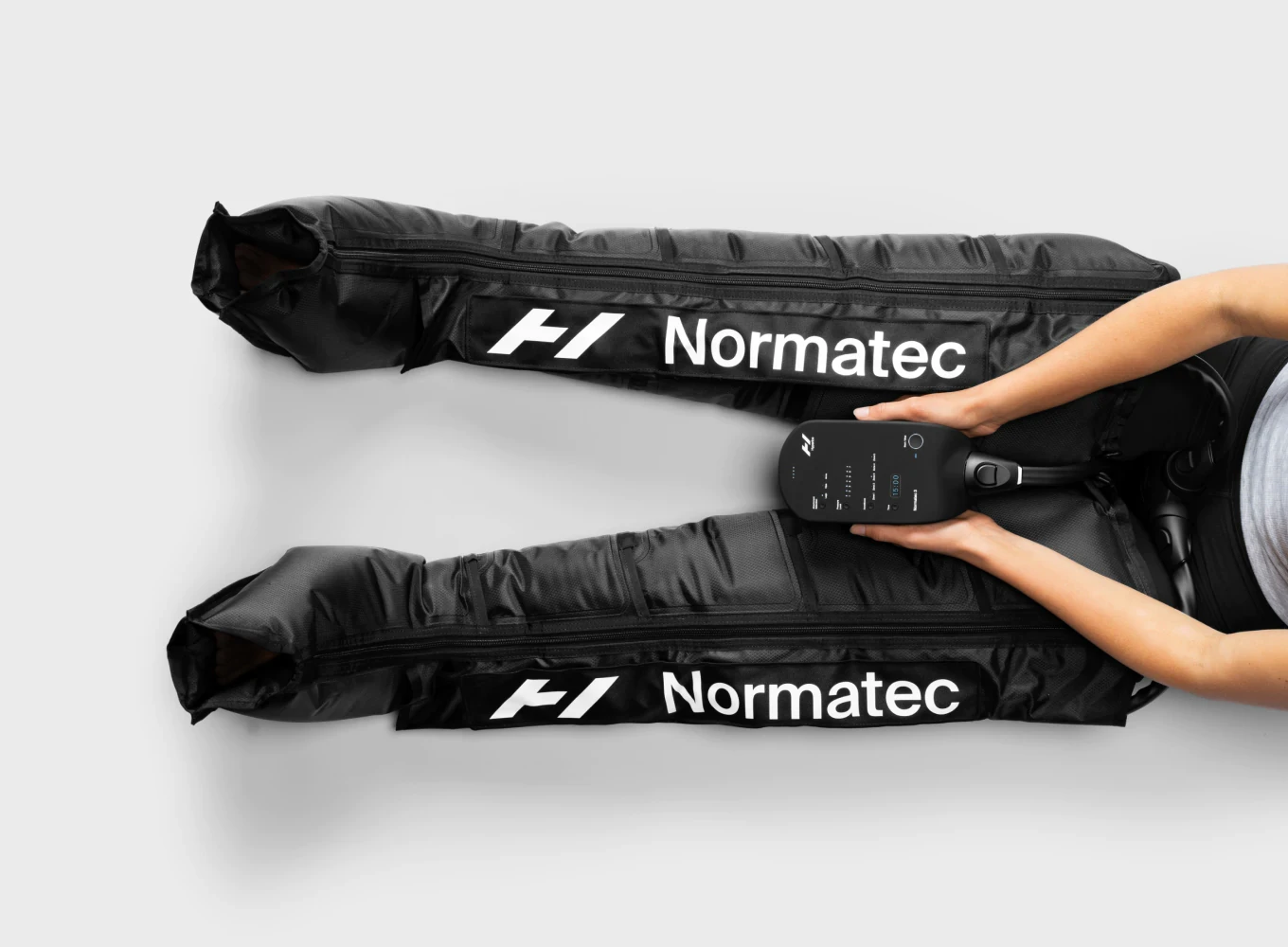Normatec Compression Therapy in Chelmsford
Recover faster, feel lighter, and boost circulation with Normatec Leg Recovery Sessions – now available to rent at Chelmsford Physio.

What Is Normatec Compression Therapy?
Normatec 3 Legs by Hyperice is an advanced recovery system designed to improve circulation, reduce muscle soreness, and speed up post-exercise or injury recovery. Using dynamic air compression, the leg sleeves mimic natural muscle pumping to boost blood flow, reduce inflammation, and flush out toxins.
Trusted by elite athletes and physios worldwide, Normatec is now available for rental at
Chelmsford Physio, giving you the freedom to experience high-end recovery in the comfort of your own home.
Who Can Benefit from Normatec?
Normatec is ideal for:
- Runners, cyclists & triathletes
- Gym-goers and sports enthusiasts
- Post-op or post-injury recovery
- Individuals with heavy, tired, or swollen legs
- People with poor circulation or lymphatic issues
- Long-haul travellers or standing occupations
Whether you're training for an event or simply want to speed up your recovery between sessions, Normatec delivers.
Key Benefits:
- Improves blood circulation
- Reduces delayed onset muscle soreness (DOMS)
- Aids lymphatic drainage and reduces swelling
- Speeds up recovery after exercise or injury
- Relieves leg fatigue from work, sport or travel
- Supports recovery from surgery or immobility
Why Rent From Chelmsford Physio?
- Trusted clinic with expert physios on hand
- Professional guidance before rental
- Clean, safe, and fully maintained equipment
- Local support during your rental period
- Convenient location at Riverside Leisure Centre
Ready to Recharge Your Recovery?
Take control of your recovery with the same technology used by top athletes. Whether you’re dealing with post-run fatigue or long-term swelling, Normatec Leg Compression Therapy offers a smart, non-invasive solution.
Enquire today about Normatec rentals at Chelmsford Physio.
Let our team help you recover faster and feel better — wherever you are.
Jon McComish PGc BSc (Hons)
Clinic Director & Chartered Physiotherapist
Chelmsford Physio
Riverside Leisure Centre, Victoria Rd, Chelmsford CM1 1FG



